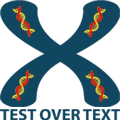Business Analysis Maturity Model

Introduction
In the world of business analysis, maturity has often been measured through processes, titles, and structures. But in reality, what defines a business analyst is not their job title — it is the tasks they perform. Inspired by the CMMI framework (now maintained by ISACA) and grounded in the 30 tasks defined in the BABOK Guide, the Business Analysis Maturity Model (BAMM) provides a new, practical way to assess and improve organizational business analysis capability.
Why Tasks, Not Titles?
Organizations often assign business analysis responsibilities to a wide range of roles: business analysts, product owners, project managers, solution architects, or even executives.
📌 What unites these roles is that they all perform business analysis tasks. According to the BABOK Guide, there are 30 specific tasks across 6 knowledge areas that form the backbone of effective business analysis.
By focusing on these tasks rather than job titles, organizations can establish a unified, role-independent maturity model that truly reflects how business analysis is practiced.
The Foundation: BABOK’s 30 Tasks
The BABOK Guide defines tasks across six knowledge areas:
- Business Analysis Planning and Monitoring
- Elicitation and Collaboration
- Requirements Life Cycle Management
- Strategy Analysis
- Requirements Analysis and Design Definition
- Solution Evaluation
These tasks represent the essence of BA work — from planning and elicitation to strategy, design, and solution evaluation.
Linking BABOK to the CMMI Framework
The Capability Maturity Model Integration (CMMI) provides a structured way to measure capability in five levels:
- Initial – Ad hoc and inconsistent
- Managed – Project-level, repeatable practices
- Defined – Standardized across the organization
- Quantitatively Managed – Measured and controlled
- Optimizing – Continuous improvement
When applied to business analysis, these levels describe how consistently and effectively the 30 BABOK tasks are performed.
- At Level 1, tasks are performed inconsistently, depending on individuals.
- At Level 2, tasks are repeatable at the project level.
- At Level 3, all 30 tasks are standardized organization-wide.
- At Level 4, task execution is measured and quality-controlled.
- At Level 5, BA tasks are continuously improved to maximize business value.
Benefits of the Business Analysis Maturity Model
Organizations that adopt this model gain:
- A clear assessment tool for current BA capability
- A roadmap for growth in business analysis practices
- Better alignment between strategy, stakeholders, and solutions
- A way to connect business analysis performance to business value
Whether you’re a business analyst, project manager, product owner, or leader, if you perform BABOK tasks, this model is relevant to your work.
Conclusion
The Business Analysis Maturity Model (BAMM) reframes how organizations understand and grow their BA capability. By shifting the focus from titles to tasks, and aligning BABOK with the proven structure of CMMI, organizations can move from ad hoc practices to optimized, value-driven analysis.
This innovative approach provides a structured, practical path for organizations seeking to mature their business analysis practices and achieve better results.

Other Business Analysis Articles:

